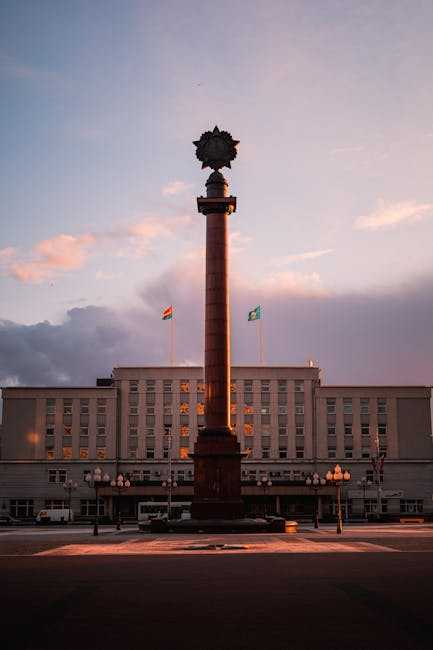Table of Contents
- Exploring the Evolution of Fine American Art Through the Ages
- Notable American Artists Who Shaped the Fine Art Scene
- Understanding Different Styles and Movements in American Art
- Tips for Collecting and Investing in Fine American Art
- Q&A
- Wrapping Up


Exploring the Evolution of Fine American Art Through the Ages
From the moment European settlers arrived on American shores, the roots of fine art began to intertwine with the complex tapestry of cultural influences. Early American art was largely characterized by portraiture and landscapes, often depicting the emerging identity of a nation. Artists like John Singleton Copley and Gilbert Stuart gained fame for their realistic portrayals of prominent figures and landscapes, capturing the essence of 18th-century America. This emphasis on representation laid a foundation that would flourish in subsequent movements.
The 19th century marked a significant shift as the Romanticism movement made its way across the Atlantic. This era celebrated emotion, nature, and individualism, giving American artists the opportunity to explore themes that resonated with the national spirit. Iconic figures such as Thomas Cole and Frederic Edwin Church emerged as leaders of the Hudson River School, bringing the breathtaking landscapes of America into focus. Their romanticized depictions emphasized the vastness and beauty of the new nation, influencing generations of artists and fostering a sense of pride in American scenery.
As the 20th century dawned, the art world began to experience radical transformations spurred by modernism. Artists sought to break away from traditional techniques and subject matters, experimenting with new styles and ideas. Movements such as Abstract Expressionism, led by artists like Jackson Pollock and Mark Rothko, encouraged personal expression and emotional depth. These revolutionary changes redefined the boundaries of fine art and paved the way for diverse interpretations of what art could be, ultimately leading to an explosion of creativity across various forms.
Today, fine American art continues to evolve, reflecting the complexities of contemporary society. Artists are experimenting with different mediums and incorporating technologies like digital art and installation to address current issues such as social justice and climate change. The dialogue surrounding art has shifted to include a broader range of voices, cultures, and perspectives, showcasing the rich fabric of American identity. This evolution not only honors the legacies of past movements but also invites innovative expressions that challenge viewers and contribute to the ongoing narrative of fine art in America.


Notable American Artists Who Shaped the Fine Art Scene
Throughout American history, several artists have emerged as pivotal figures, leaving an indelible mark on the fine art scene. Their innovative styles, compelling narratives, and cultural perspectives have shaped not only the art world but also societal consciousness. Artists like Georgia O’Keeffe explored the vast landscapes and delicate flowers of the American Southwest, infusing them with bold colors and surprising forms. O’Keeffe’s work personifies the connection between the American landscape and artistic expression, making her an icon of modernism.
Another transformative figure is Jackson Pollock, who revolutionized abstract painting with his unique drip technique. Pollock’s method emphasized the act of painting itself and showcased the chaotic beauty of spontaneity. His works, often monumental in size, invite viewers into a visceral experience, challenging preconceived notions about what art could be. His contribution not only altered the course of painting but also ignited a broader discussion about the nature of creativity and artistic intent.
The realm of American art would also be incomplete without Marcel Duchamp, whose provocative approach questioned traditional aesthetics. Known for his conceptual works, such as the infamous “Fountain,” Duchamp’s art blurs the line between art and everyday objects, prompting viewers to reconsider the definition of art itself. His influence extends beyond the boundaries of fine art, resonating through contemporary culture and challenging future generations of artists to think outside conventional frameworks.
| Artist | Key Contribution | Movement |
|---|---|---|
| Georgia O’Keeffe | Connected nature with abstraction | Modernism |
| Jackson Pollock | Revolutionized abstract painting | Abstract Expressionism |
| Marcel Duchamp | Redefined what constitutes art | Conceptual Art |
Additionally, Edward Hopper deserves mention for his ability to capture the solitude of American life through striking use of light and shadow. His paintings evoke a sense of loneliness and stillness, often reflecting the complexities of human emotion and experience. Hopper’s work resonates deeply with viewers, inviting them to ponder the narratives that unfold within his meticulously detailed urban and rural settings. Each of these artists not only excels in technique but also embodies the spirit of their times, making their contributions vital to understanding the evolution of American fine art.
Understanding Different Styles and Movements in American Art
Exploring the rich tapestry of American art reveals a diverse range of styles and movements, each contributing a unique thread to the overall narrative. From the bold, expressionistic strokes of Abstract Expressionism to the meticulous details of Realism, these varying approaches reflect the dynamic cultural landscape of the United States. Each movement has roots in historical, social, and political contexts that influenced artists and their works at different times. Among the most notable styles are:
- Abstract Expressionism: Characterized by spontaneous, automatic, or subconscious creation, leading figures like Jackson Pollock and Mark Rothko emphasized emotional expression through vivid colors and textured surfaces.
- Impressionism: This movement, pioneered by artists like Mary Cassatt and Childe Hassam, focused on capturing fleeting moments of light and atmosphere using loose brushwork and vibrant palettes.
- Pop Art: Emerging in the mid-20th century, artists like Andy Warhol and Roy Lichtenstein embraced consumer culture, using popular imagery and mass media to challenge traditional boundaries of art.
Each style serves as a reflection of the American spirit, capturing the nuances of the era in which it was created. For instance, the work of the Hudson River School exemplified the romanticism of the American landscape in the mid-19th century, highlighting the beauty of nature and the philosophy of Manifest Destiny. Conversely, the Harlem Renaissance brought forth a powerful voice celebrating African American culture and identity in the early 20th century, with vibrant portraits and scenes depicting everyday life in urban settings.
Understanding these movements provides insight not only into the artistic techniques employed but also into the collective psyche of American society across different periods. Themes of realism and abstraction often intersect in fascinating ways as artists navigate their personal interpretations of reality. An exploration of these styles reveals a broader dialogue about identity, societal values, and the continuous evolution of art in cultural expression.
| Style/Movement | Key Characteristics | Notable Artists |
|---|---|---|
| Abstract Expressionism | Emotional intensity, spontaneous techniques | Jackson Pollock, Mark Rothko |
| Impressionism | Light and color focus, loose brushwork | Mary Cassatt, Childe Hassam |
| Pop Art | Consumer culture, mass media imagery | Andy Warhol, Roy Lichtenstein |


Tips for Collecting and Investing in Fine American Art
Investing in fine American art requires a thoughtful approach that goes beyond just aesthetics. Understanding the historical context and artistic movements that influence works can provide valuable insight into what may appreciate over time. Researching key artists from different periods—from the Hudson River School to Abstract Expressionism—is essential. By familiarizing yourself with notable figures and their contributions, you can make informed decisions when adding pieces to your collection.
When building your portfolio, consider attending art fairs and gallery openings. These events not only allow you to view works up close but also offer the chance to engage with artists and collectors. Networking in these environments often leads to recommendations and insights that aren’t readily available online. Online platforms can also serve as great resources—dedicated websites showcase emerging artists whose work may soon gain prominence. Frequenting online marketplaces and following art trends can provide a broader spectrum of what’s available.
Next, develop an understanding of valuation. The price of art can fluctuate dramatically based on market demand, artist reputation, and the artwork’s condition. Maintain a checklist for evaluating potential purchases that includes aspects such as provenance, rarity, and the current market landscape. Here’s a simple table guide to help you assess these critical factors:
| Factor | Considerations |
|---|---|
| Provenance | Documented history of ownership |
| Rarity | Limited editions or unique pieces |
| Condition | Physical state, any restoration done |
| Market Trends | Current demand and artist recognition |
it’s vital to consider the long-term aspects of your collection. Investing in fine art often means thinking beyond immediate financial return; it’s an avenue for personal enjoyment and cultural enrichment. Documenting your collection through photographs and detailed records can enhance its provenance and help maintain its value. By staying engaged with the community and continually educating yourself, you not only enhance your collection but also enjoy the enriching experience that fine American art embodies.
Q&A
Q&A: Exploring Fine American Art
Q: What defines Fine American Art? A: Fine American Art encompasses a diverse range of artistic expressions created in the United States. It includes traditional forms such as painting, sculpture, and printmaking, as well as contemporary interpretations that challenge the conventional boundaries of art. Key characteristics often include a reflection of American culture, history, and values, often expressing themes of nationalism, identity, and social change. Q: How has Fine American Art evolved over the years? A: The evolution of Fine American Art can be traced through various movements, from the early colonial period’s portraiture to the revolutionary spirit of the Hudson River School, which celebrated the American landscape. The 20th century birthed movements like Abstract Expressionism and Pop Art, reflecting societal shifts and technological advancements. Today, the landscape continues to evolve, incorporating multimedia and installation art that invites audience interaction. Q: What role do American artists play in the global art scene? A: American artists have significantly influenced the global art scene, often setting trends that ripple across boundaries. Iconic figures like Georgia O’Keeffe, Jackson Pollock, and Andy Warhol have not only defined American art but have also captured international interest, making their works universally relevant. Contemporary American artists continue to contribute unique perspectives, addressing global issues through their work. Q: Can you name some key figures in Fine American Art? A: Certainly! Key figures include:- Georgia O’Keeffe: Known for her large-scale flower paintings and Southwestern landscapes.
- Edward Hopper: Celebrated for his realistic depictions of American life, particularly urban isolation.
- Mark Rothko: A leading figure in the Abstract Expressionism movement known for his color-field paintings.
- Jean-Michel Basquiat: A Neo-Expressionist artist who combined text and imagery to comment on race and class.
This Q&A format aims to provide clarity and insight into Fine American Art, showcasing its importance and accessibility while engaging readers who are both new and familiar with the subject.
